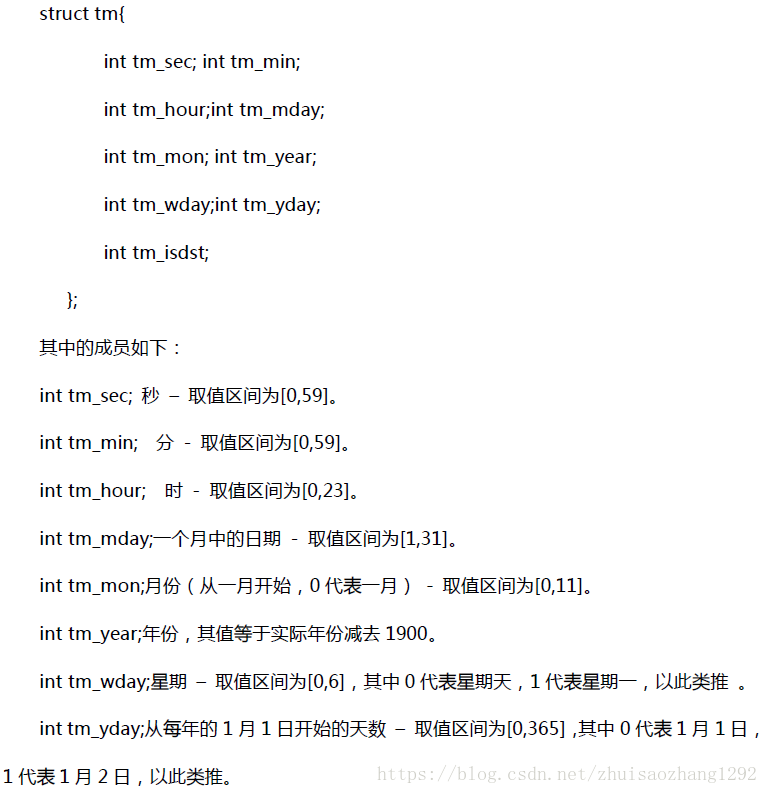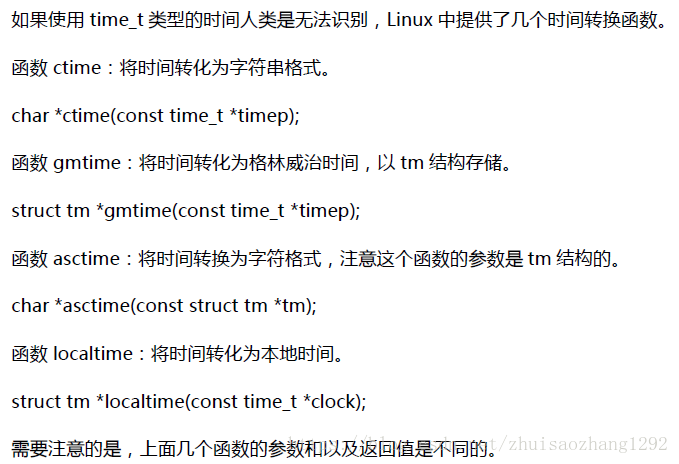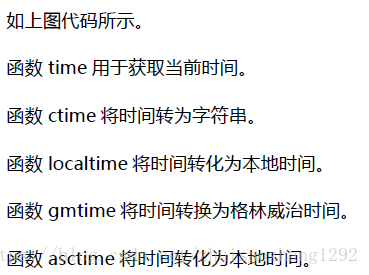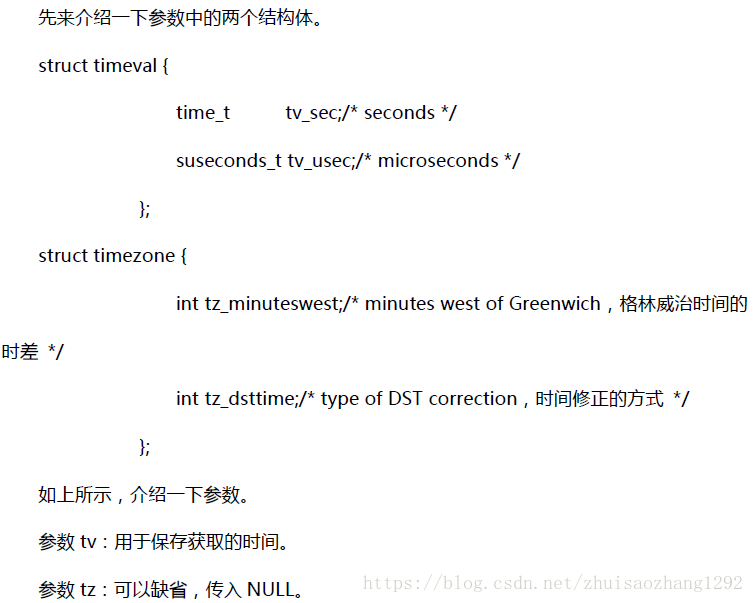Linux中时间的几个基本概念:
UTC时间:世界统一时间,世界各地的时间以这个为基准。
UNIX 纪元时间:Unix time 是指从1970 年1 月1 日00:00:00 UTC 开始所经过的秒数
格林尼治标准时(GMT)时间:是指太阳经过英国格林尼治的时间
机器日历时间:对于Linux 来说,机器日历时间是UNIX 纪元时间
时间的调用:
函数time_t time(time_t *t)在头文件“#include <time.h>”中。
参数1:time_t 类型,以秒为单位,如果有参数则数据传送到time_t *t 中。
返回值:如果参数为NULL 会返回time_t 类型;出现错误返回-1。
其中的时间类型time_t,它是一个long 类型,及其机器日历时间,在头文件time.h 中定义。
gettime.c
#include<stdio.h>
#include<time.h>
int main(void)
{
time_t timep;
time(&timep);
printf("UTC time: 0x%08x\n",timep);
timep = time(NULL)
printf("UTC time: 0x%08x\n",timep);
return 0;
}
使用了两种方式返回时间,一种写入参数,一种写入NULL。
将文件交叉编译 移至开发板运行 即可看到实验效果(“arm-none-linux-gnueabi-gcc -o gettime gettime.c -static”)
时间的转换:
常用的时间结构体tm



exchangetime.c
#include<stdio.h>
#include<time.h>
int main(void)
{
time_t timep;
struct tm *tblock;
time(&timep);
printf("ctime/timep is %s",ctime(&timep));
printf("asctime is %s",asctime(gmtime(&timep)));
tblock = localtime(&timep);
printf("localhost is: %s",asctime(tblock));
printf("localtime is %s",ctime(&timep));
return 0;
}

再将文件 编译 移至开发板运行 “arm-none-linux-gnueabi-gcc -o exchangtime exchangtime.c -static”
输出:

处理器性能的测试:
int gettimeofday(struct timeval *tv, struct timezone *tz);
int settimeofday(const struct timeval *tv, const struct timezone *tz);
上面两个时间函数在头文件“#include <sys/time.h>”中。

上面获取的时间精度达到了微妙,比time 函数获取的时间精度要高6 个数量级。这个精度就可以用于计算代码执行时间了。
实验代码:precisiontime.c
#include<stdio.h>
#include<time.h>
#include<sys/time.h>
void function()
{
unsigned int i,j;
double y;
for(i = 0; i < 1000; i++)
for(j = 0; j < 1000; j++)
y = i/(j+1)
}
int main(void)
{
struct timeval tpstart,tpend;
float timeuse;
gettimeofday(&tpstart,NULL);
function();
gettimeofday(&tpend,NULL);
timeuse = 1000000*(tpend.tv_sec - tpstart.tv_sec) + (tpend.tv_usec - tpstart.tv_usec);
timeuse /= 1000000;
printf("Used Time:%f\n",timeuse);
}
编译,将可执行文件移至开发板 “arm-none-linux-gnueabi-gcc -o precisiontime precisiontime.c -static”
























 1万+
1万+

 被折叠的 条评论
为什么被折叠?
被折叠的 条评论
为什么被折叠?








